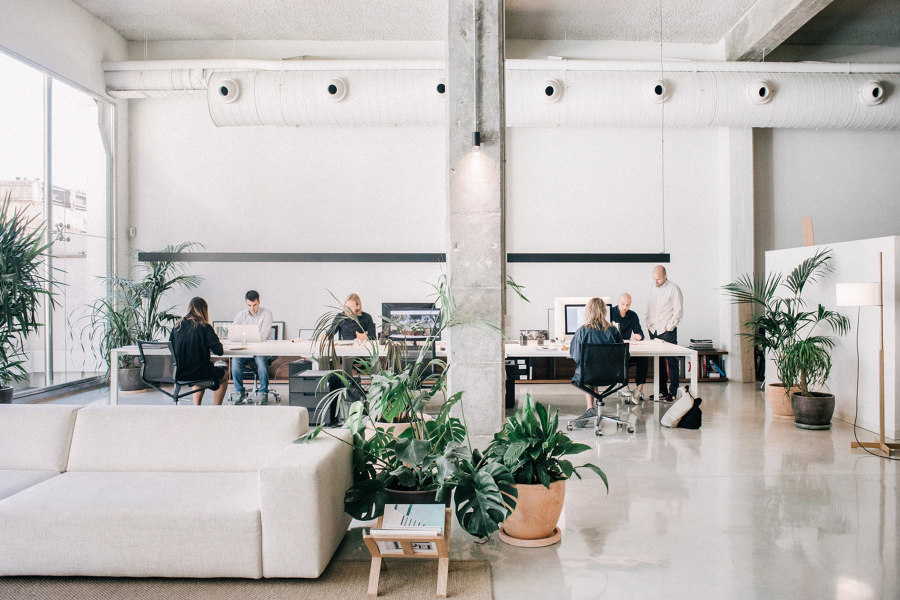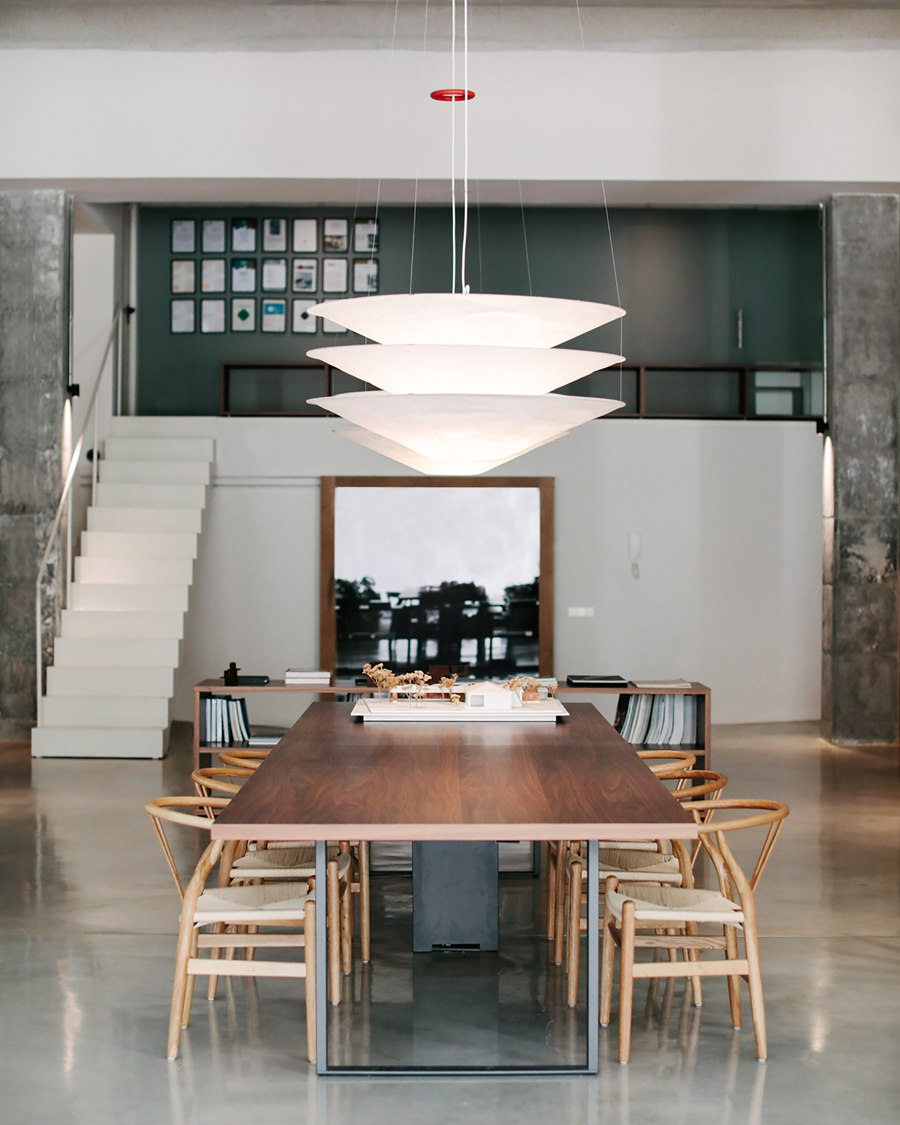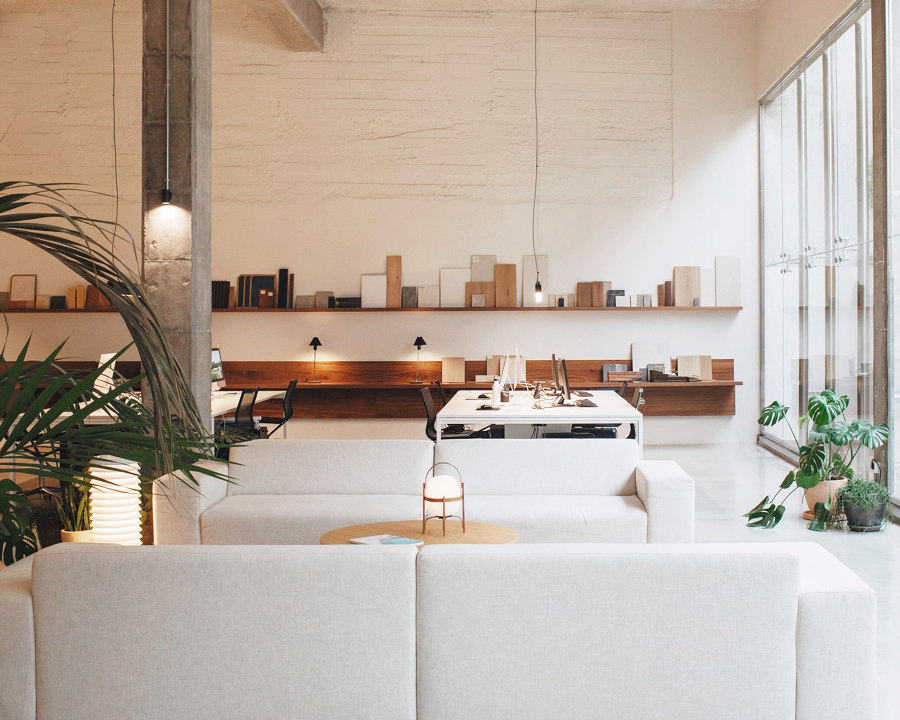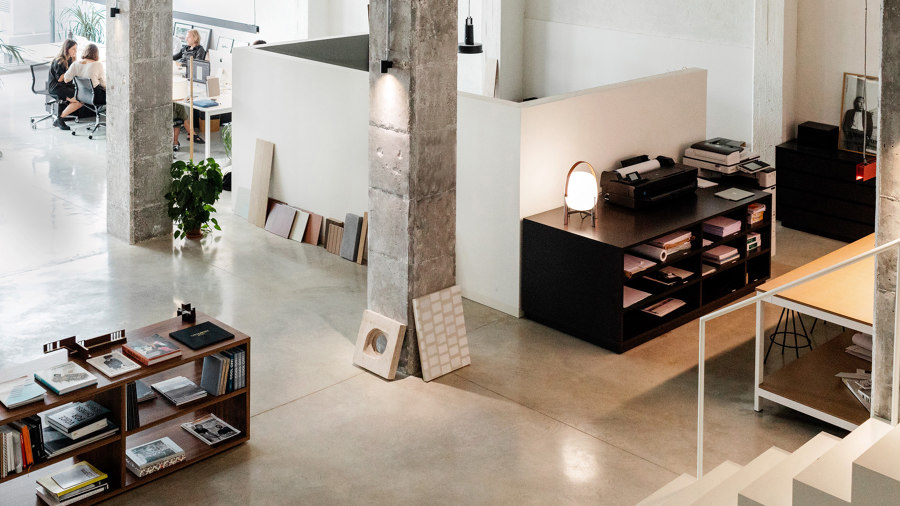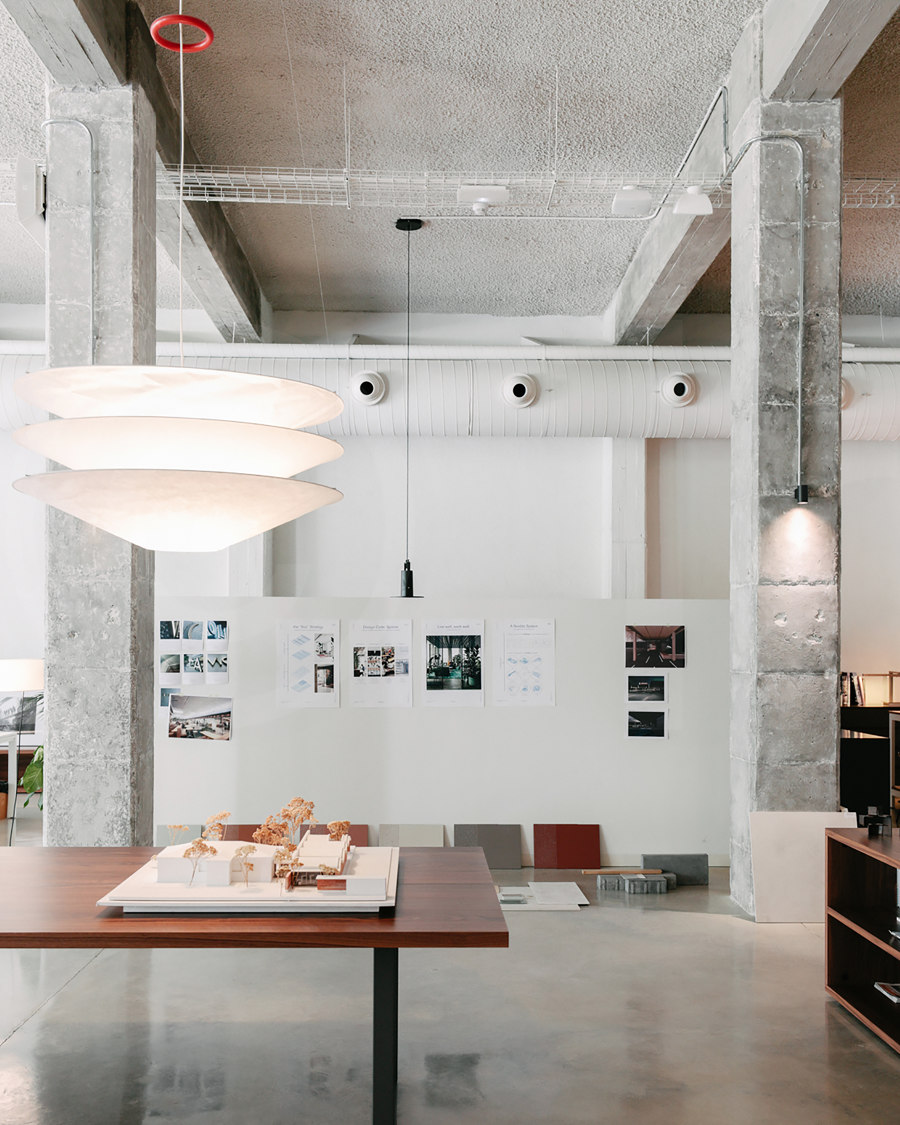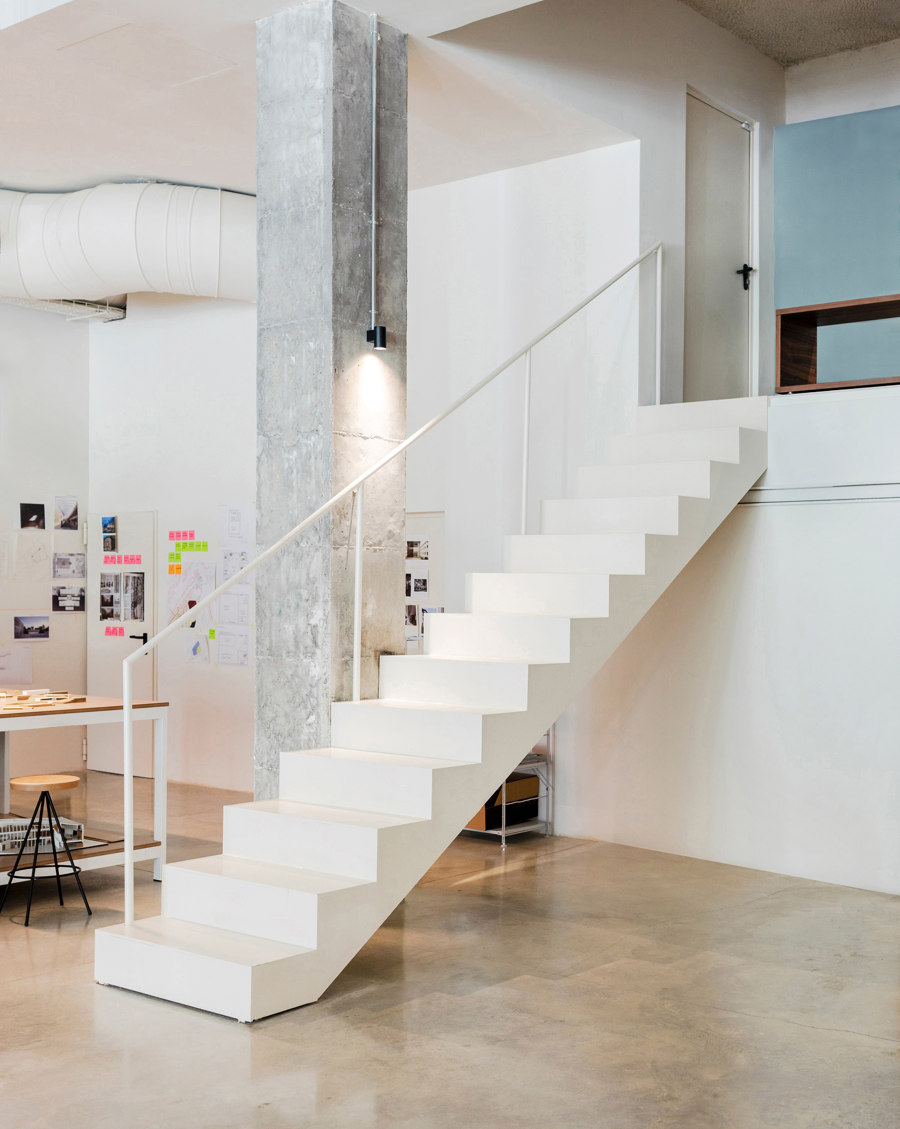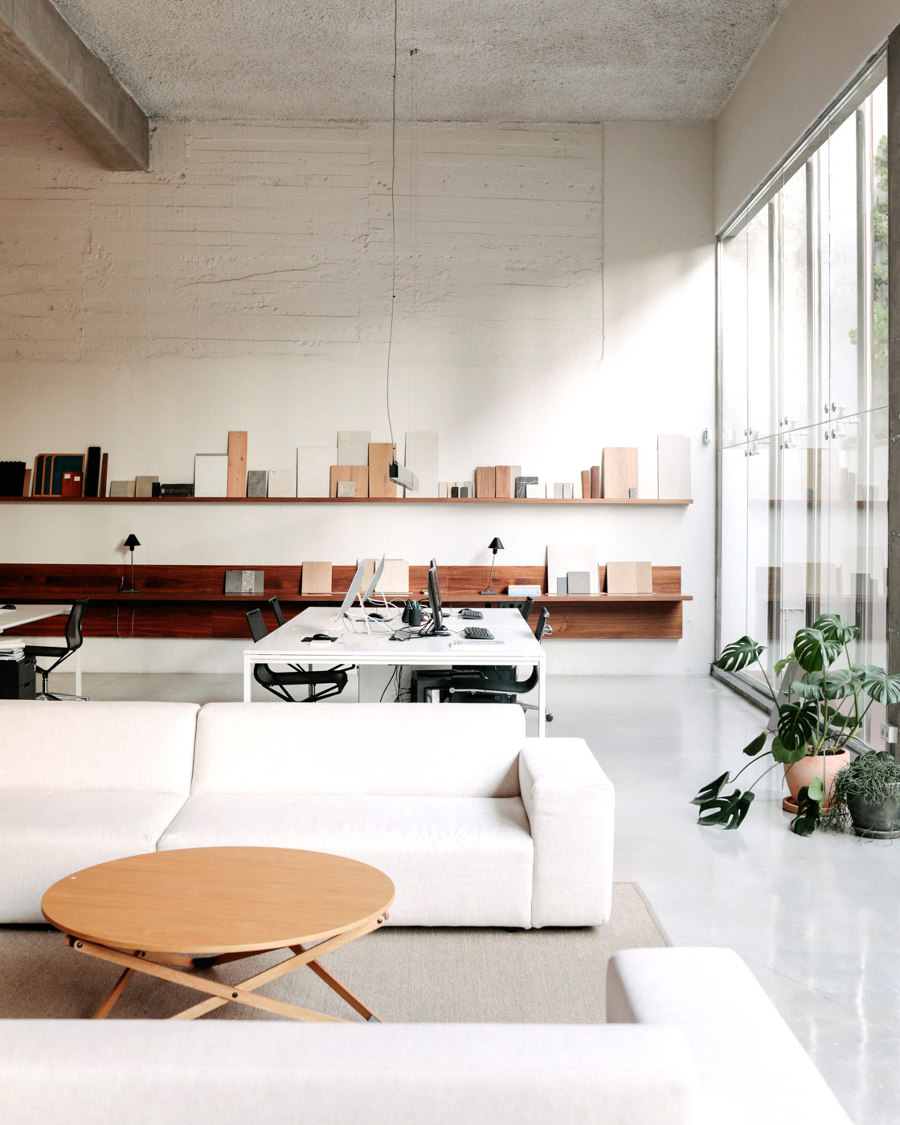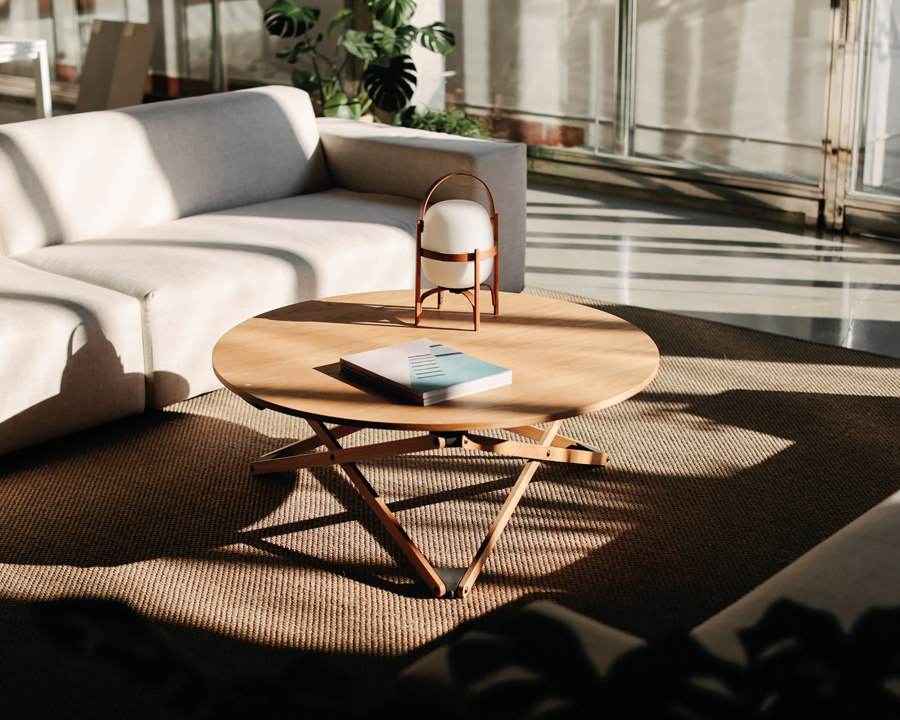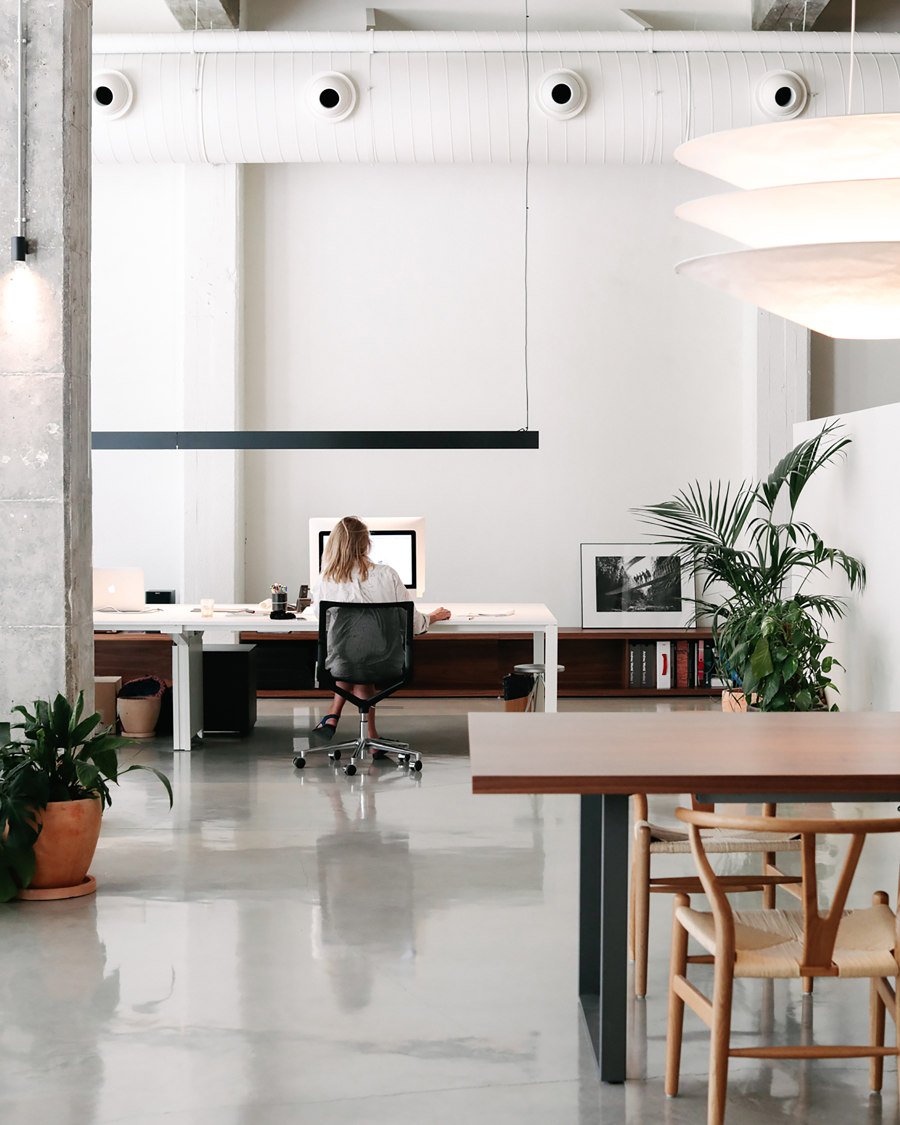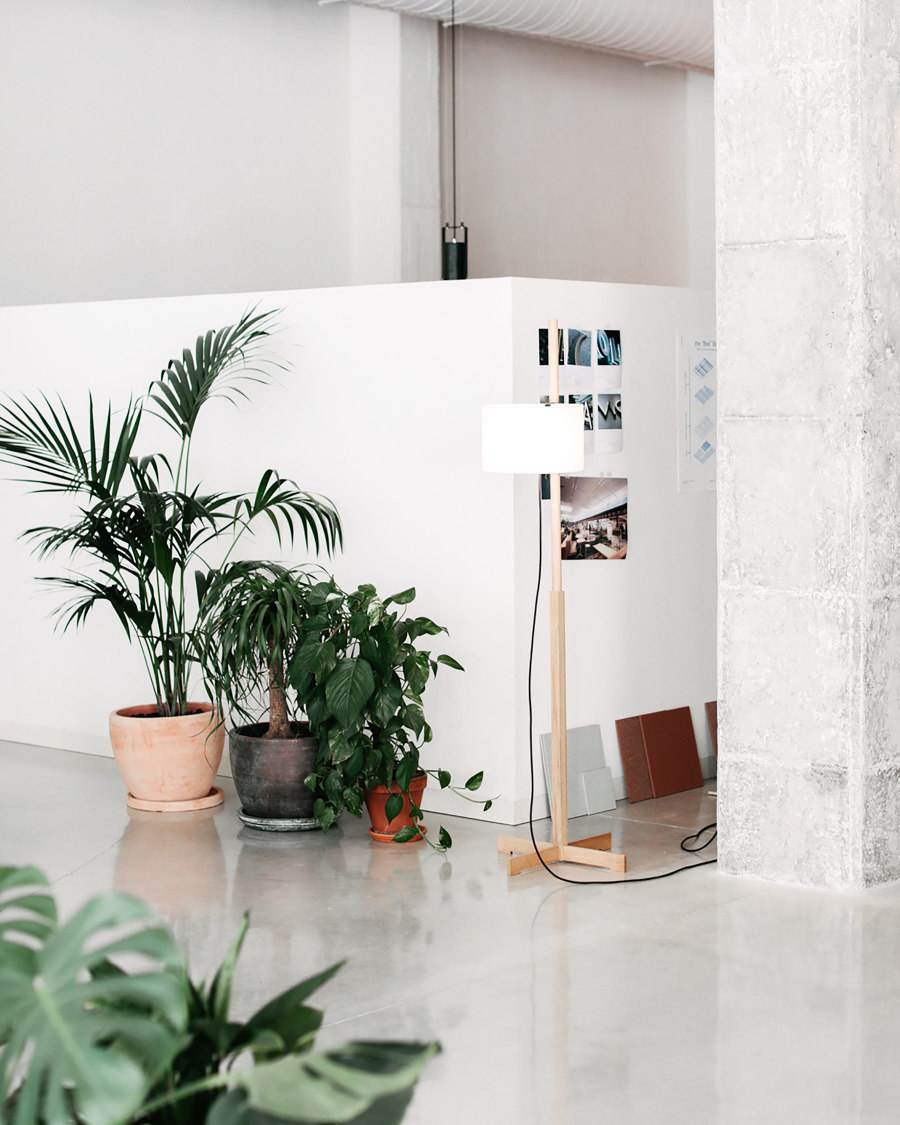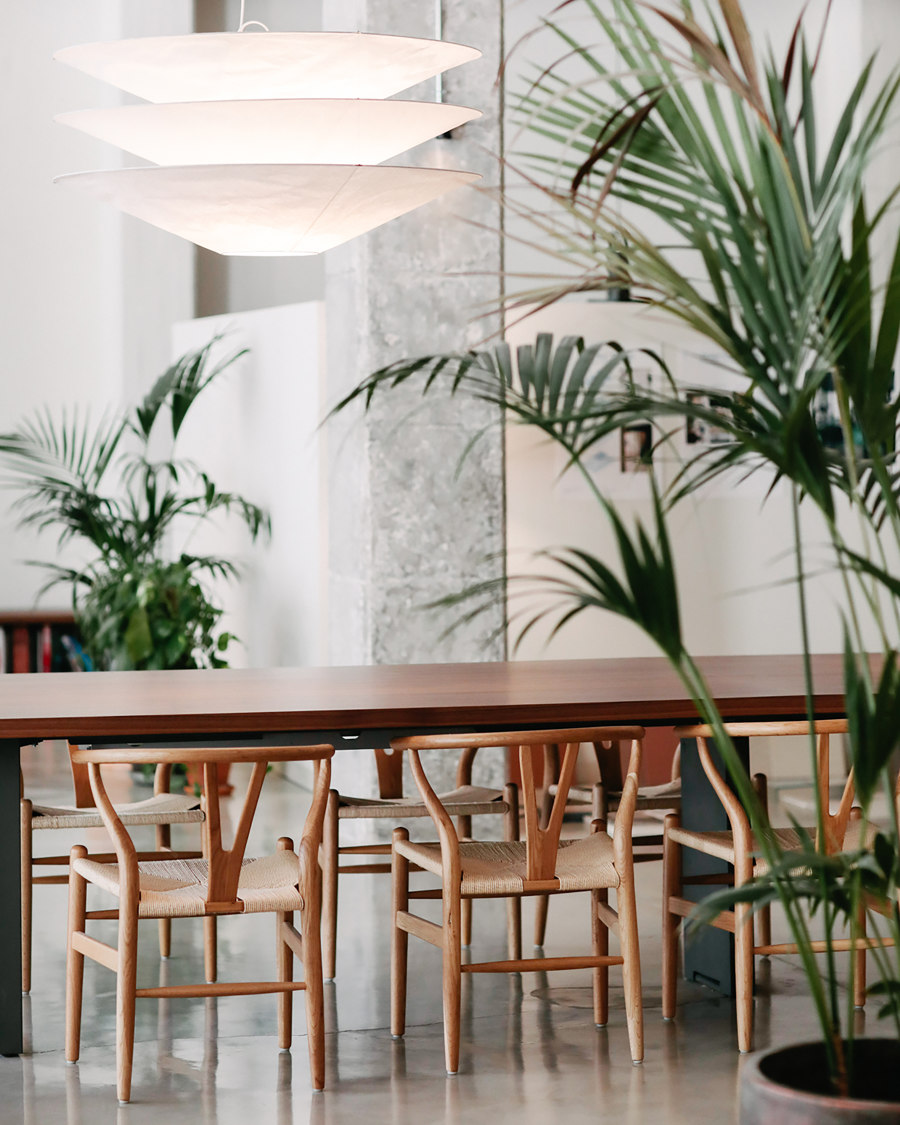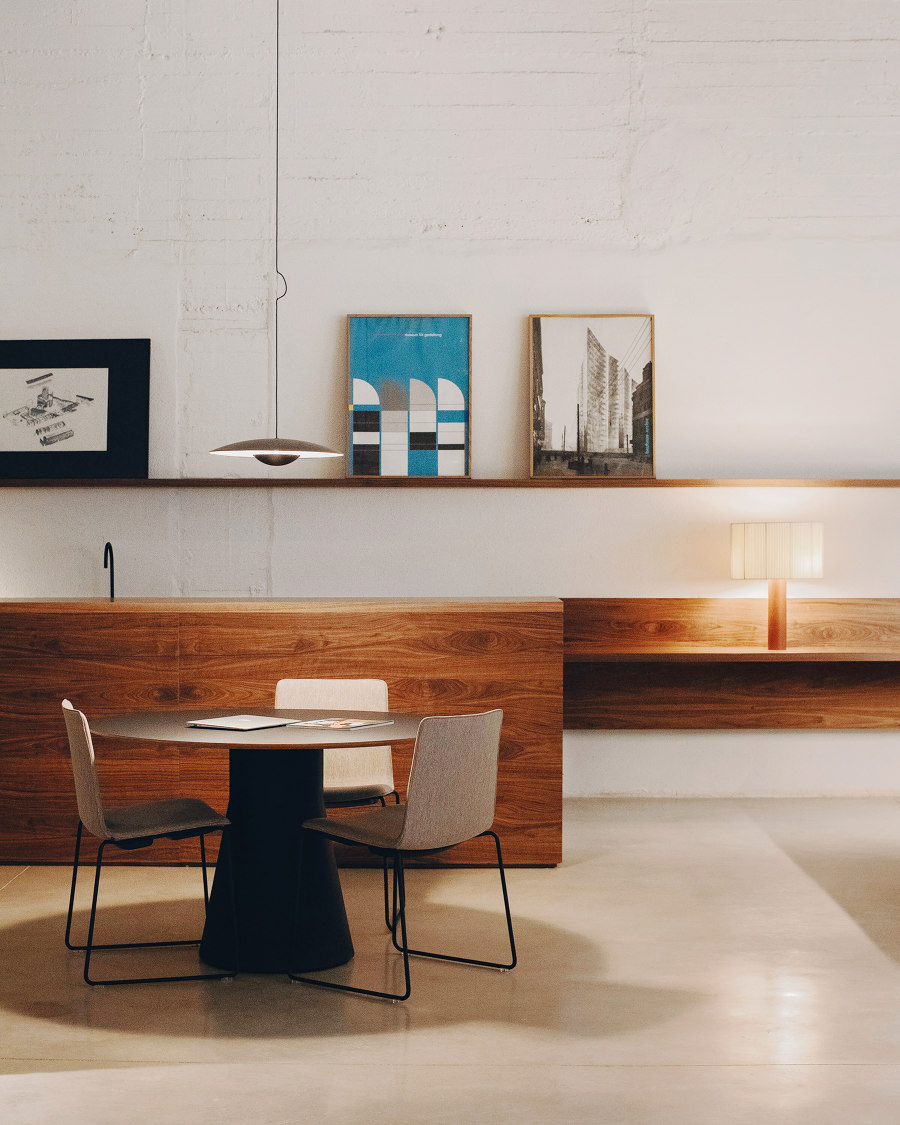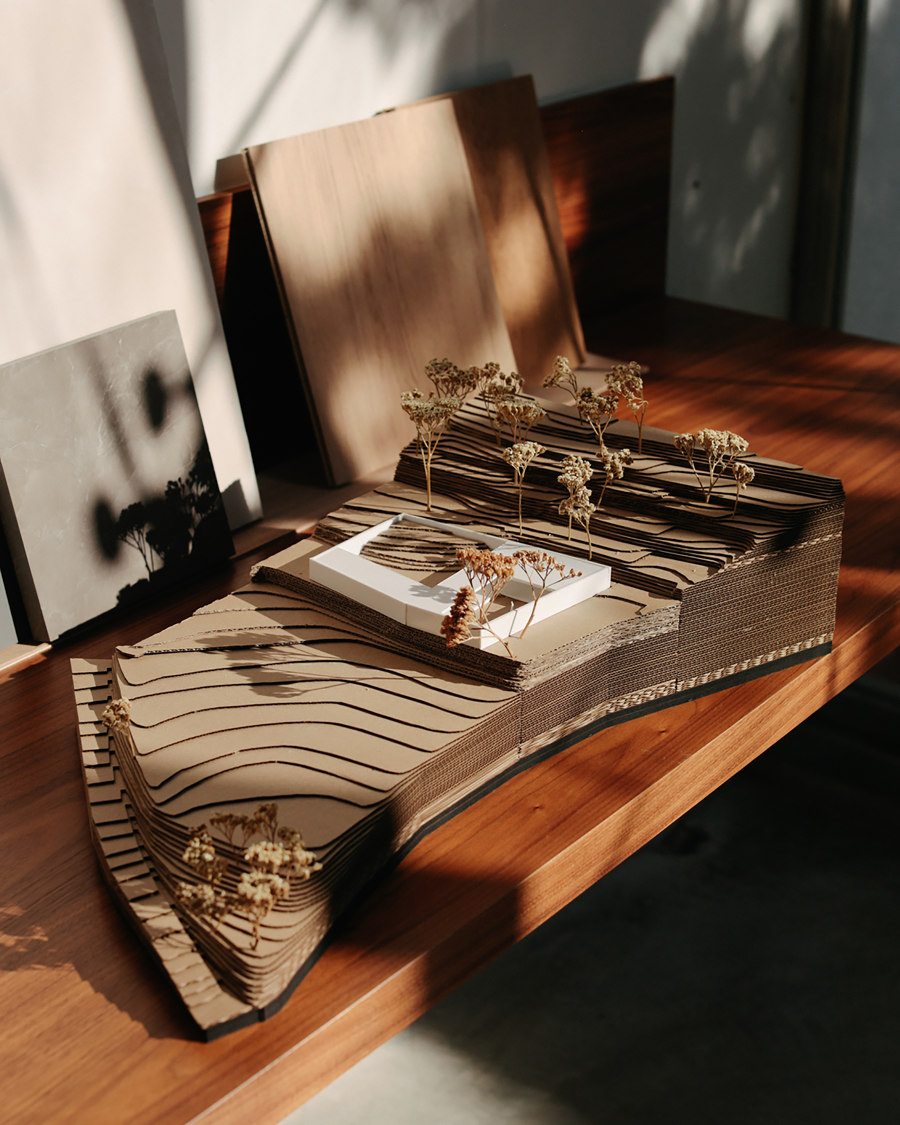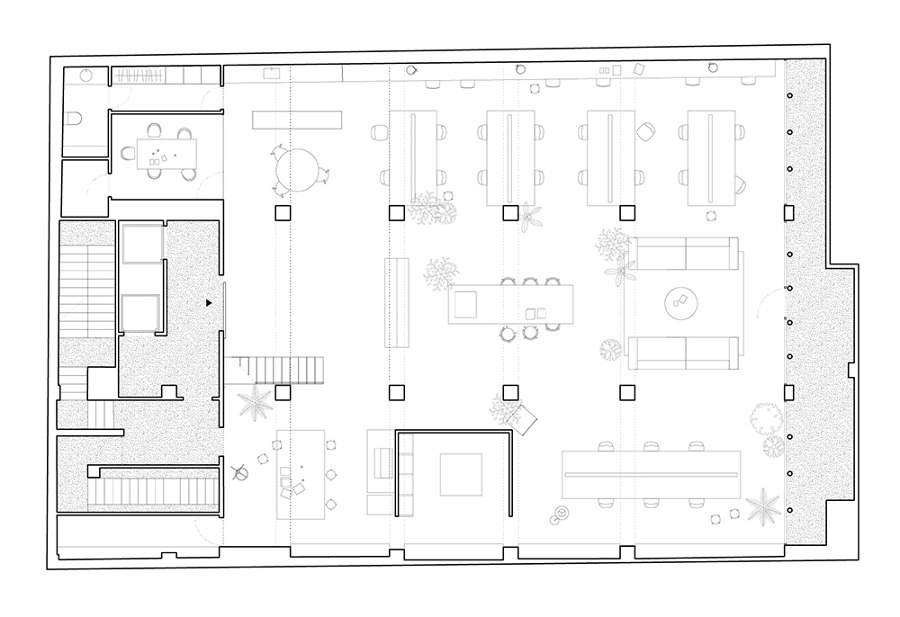We define what we feel architecture truly is as an “atmosphere”. It’s the emotion we feel when entering a building, a room, a space; it’s the story that architecture is able to tell without us knowing anything about it. Walking inside a building can feel like meeting someone for the first time, so when it came to our own office, we wanted the space to do the talking for us.
What was to become the new office came to us unexpectedly. When visiting a client, we noticed that they had a hidden basement. Driven by curiosity, we walked down the stairs and found a crude, open space (the remains of an industrial warehouse). In its brutal simplicity, it felt like a white canvas to fill.
What do we require from a space when we come in for work? What makes for the right atmosphere to work in, and how can we project company values and philosophy onto a spatial design? What will work look like in the near future, now that Millennials are entering the labour market? What will they want? What do we actually want?
What used to be considered a duty performed from 9—5 inside a cubicle has changed a lot in the present day world. Active employees in the job market have been shaped by a constant upgrade in technology, and along with it came a new work mentality. A global internet connection and social media communication proved we can actually work from any place at any given time, driving fixed schedules close to obsolete, and the reasons for younger talent to go work inside an office less and less convincible.
At the same time, we live in an Age of Knowledge thanks to a widespread democratization of information, making employees analysing and evaluating data rather than purely and merely generating it. Employees now plan, strategise or design on a daily basis, successfully only when done so creatively, with the intention to help companies and their communities grow.
The desire to be creative at work is high, leading to a constant search for both professional and personal growth, as both lives are gradually being intertwined. We work to live and live to work with satisfaction, turning a job into something close to a lifestyle that should be made to fit accordingly to every personality.
Flexibility has become the key concept design of every office space, be it our own work space, or that of global firms like Roche (the Swiss health company) or King (the makers of Candy Crush) that have to fit so many personalities inside one company philosophy and over various buildings. People today want to collaborate and make new connections in order to develop new creative ideas. The concept of work has so become the real life derivative of an at all times connected life, turning the need for a horizontal and interdisciplinary approach into the basis of a successful business culture.
The objective to including flexibility in both design and business culture is to meet with a more general tendency in our society. We all desire to feel connected, though without it threatening our individuality and originality. Projected onto the workspace, this means creating the right atmosphere for everyone working inside of it: the design of an individual experience generated by an architecture made for the collective.
Design Team:
MESURA
